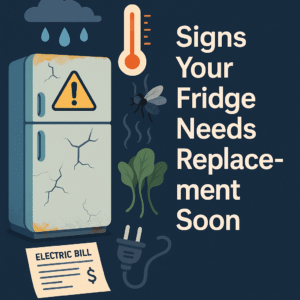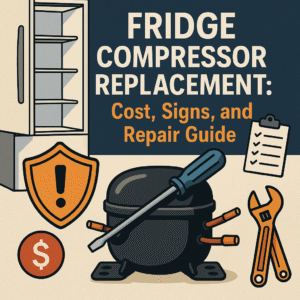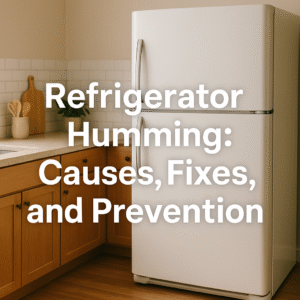If you’re searching for how to unclog garbage disposal, you’re not alone. A clogged garbage disposal is a common kitchen woe that can cause major frustration. When your sink won’t drain, the water backs up, and a foul odor wafts up, it’s time to take action. The good news? Many disposal jams are easy to fix on your own with a few simple tools and steps. This friendly guide will teach you how to fix a clogged garbage disposal and prevent future problems, so you can say goodbye to kitchen sink disposal jams.

Common Causes of Garbage Disposal Clogs
Garbage disposals are powerful, but certain items and habits can cause jams. Knowing the common causes helps you avoid clogs in the first place. Some frequent culprits include:
- Coffee grounds and fibrous foods: These small particles and strands can clump together. Onion skins and celery fibers wrap around the disposal blades, causing blockages.
- Grease, oil, and fat: Liquids that seem to wash away can solidify inside the disposal or pipes as they cool. This sticky gunk traps food scraps and builds up over time.
- Starchy foods: Potato peels, rice, pasta, or bread crumbs expand with water. They can create a thick paste that plugs the pipes.
- Eggshells and bones: Hard shells or bones may chip or jam between the blades. Eggshell membranes can also stick to the grinder.
- Stringy or sticky foods: Celery, corn husks, artichokes, and banana peels are tough for the disposal to chop. Stringy vegetables and fibrous fruit pieces can wedge the impellers.
- Large pieces and too much waste at once: Trying to grind a large amount of food all at once can overwhelm the motor. It’s better to feed scraps in small batches.
Being mindful of what goes down the drain is key. Avoid tossing these troublesome items into your disposal, and you’ll prevent many jams.

Preparation: Safety Tips and Tools You’ll Need
Before diving into unclogging your disposal, get prepared with the right tools and safety precautions. Being cautious and organized makes the process easier and prevents injuries or damage.
Tools You’ll Need
Gather the following tools and supplies so you’re ready to tackle the clog:
- Hex (Allen) wrench (often ⅜-inch) or the disposal’s special wrench (usually provided).
- Sink plunger to create suction and dislodge debris.
- Tongs or pliers for removing visible obstructions (avoid using your bare hands).
- Flashlight or headlamp to see inside the disposal and pipes.
- Protective gloves to keep your hands safe from sharp parts and gunk.
Safety Tips Before You Start
Safety is crucial. Follow these guidelines before any work:
- Turn off and double-check power: Always switch off the garbage disposal before working on it. Either unplug the unit under the sink or flip the dedicated circuit breaker, and make sure the disposal is completely off. Never rely on just the wall switch; fully disconnect the power.
- Wear protective gear: Safety goggles or glasses and gloves protect your eyes and hands. The disposal’s blades are sharp, and debris or cleaning solutions can splash.
- Work in a dry area: Remove any dishes and standing water from the sink. Clear clutter from under the sink so you can move around and place tools or parts.
With the power off and tools ready, you can proceed to the unclogging steps safely.
Step-by-Step Guide to Unclogging a Garbage Disposal
Follow these easy steps to clear your disposal jam. Take your time on each one, and remember to stay safe. Many clogs can be cleared quickly with common household tools.
- Ensure Power is Off: Double-check that the disposal is turned off and unplugged. This is the most important safety step. Place a piece of tape over the switch or label the breaker if needed, so nobody accidentally turns it on.
- Use the Hex Wrench: Most disposals have a hex-shaped hole at the bottom of the unit. Insert the hex wrench (Allen key) into this hole and wiggle it back and forth. This manually rotates the blades and can free the clog.
- Try a Plunger: If the disposal is still clogged, place a sink plunger over the drain (sealing around the stopper). Push and pull the plunger vigorously 15–20 times. The strong suction can help dislodge stubborn gunk. For double sinks, block the other drain with a damp cloth to ensure good pressure. After plunging, run cold water to flush out loosened bits.
- Ice and Salt (Extra Tip): If the clog persists or the disposal smells bad, try this cleaning trick. Pour a cup of rock salt (or baking soda) and several cups of ice into the disposal. Turn on cold water and run the disposal for a few seconds. The ice knocks lodged debris off the blades, and the salt acts as a mild abrasive cleaner.
- Check from Above: Shine a flashlight into the disposal. Remove any visible debris with tongs or pliers. Common items like pieces of vegetables, fruit peels, or utensils can be pulled out. Never put your bare hand into the disposal, even if it’s unplugged—sharp edges and bacteria are dangerous.
- Clear the P-Trap: If water still isn’t flowing, the clog might be in the drain trap under the sink. Place a bucket under the U-shaped P-trap pipe. Unscrew the slip nuts and carefully remove the trap. Dump any trapped waste into the bucket. Clean out the pipe, then reinstall the trap snugly to prevent leaks.
- Reset the Disposal: Once the obstruction is gone, press the disposal’s reset button (usually a small red button on the bottom of the unit). This resets the motor, especially if the unit overheated trying to start against the jam. If you had unplugged the unit, you can plug it back in now.
- Test with Cold Water: Run a strong stream of cold water and switch on the disposal. Listen for smooth operation (no grinding noises) and watch the water drain quickly. If the water drains freely and there are no odd sounds, the clog is likely cleared. If it’s still not working properly, repeat these steps.
If the disposal still hums or won’t start after this, it may have a mechanical issue beyond a simple jam. Consider calling a professional if the motor trips or the jam won’t budge.

Preventing Future Clogs
Once your disposal is working again, follow these garbage disposal repair tips to avoid repeat problems:
- Run cold water and grind waste gradually: Always let cold water run while using the disposal, and feed food scraps slowly, not in one big chunk. Cold water helps carry waste down and hardens fats for chopping, while small batches prevent motor overload.
- Avoid tough scraps: Don’t put potato peels, fibrous vegetables (like celery or corn husks), pasta, rice, coffee grounds, eggshells, or grease into the disposal. Also avoid thick banana peels and chunks of fibrous fruit rind.
- Use ice and citrus: Once a week, run the disposal with ice cubes, a handful of rock salt, and a few lemon or orange peels. The ice sharpens the blades, while citrus leaves a fresh smell and helps break down grease.
- Use sink strainers: A mesh strainer in the drain basket catches large bits (bones, vegetable cores, artichoke leaves) that might slip in. Empty the strainer regularly.
Following these tips will keep your kitchen sink disposal running smoothly and minimize future jams.

Frequently Asked Questions (FAQs)
How do I fix a clogged garbage disposal?
To fix a clogged disposal or a kitchen sink disposal jam, start by turning off the power to the unit. Use an Allen wrench to manually free the blades by rotating them back and forth. If that doesn’t clear it, try using a plunger on the drain, checking under the sink for blockages, and removing any debris you can see. After clearing the jam, press the reset button on the bottom of the disposal. Always make sure the disposal is powered off before reaching inside.
Why is my garbage disposal humming but not running?
A humming sound usually means the blades are jammed and the motor can’t turn. Power is reaching the disposal, but the flywheel is stuck. Turn off the power immediately. Insert an Allen wrench into the bottom hex hole and twist it to free the blades. This often breaks the jam. Do not plunge or insert utensils while the power is on.
Can I pour chemical drain cleaner into my garbage disposal?
No. Chemical drain cleaners can corrode the disposal and pipes. They’re too harsh for the unit’s blades and seals. Instead, stick to mechanical methods (wrench, plunger) or natural remedies like baking soda and vinegar. If a clog is deep or you suspect a more serious issue, it’s best to contact a professional rather than using chemicals.
What should I do if none of these methods work?
If your disposal is still stuck after all DIY steps, it’s time to call a professional. Continuing to force it can damage the unit. Sarcon Appliance Repair has experienced technicians who can safely unclog and repair disposals. They have the specialized tools to diagnose tough jams or motor issues and can handle more complex repairs.
Need Professional Help?
If you followed these steps and your garbage disposal is still jammed, don’t worry. Sarcon Appliance Repair is here to help. We specialize in garbage disposal repair and installations. Our skilled technicians can quickly diagnose and fix stubborn clogs or motor issues safely. We proudly serve Hershey, Harrisburg, Camp Hill, Mechanicsburg, York, and the surrounding areas.Got a clogged disposal? Call Sarcon Appliance Repair today for fast, friendly service. We’ll get your kitchen back to running smoothly in no time!





